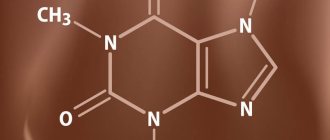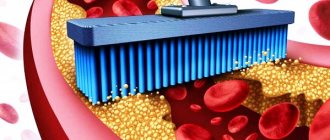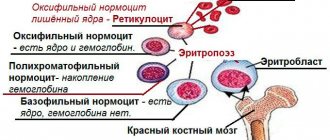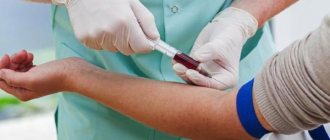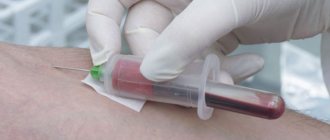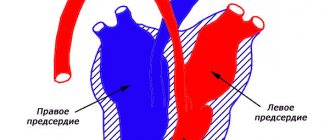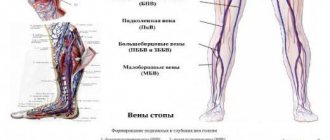Home>Articles>What does alcohol do when it enters the body through blood vessels: consequences, possible diseases
quick menu (hide)
- What does alcohol do to the heart and blood vessels?
- What happens to the heart and blood vessels with constant drinking of alcohol?
- How to quickly eliminate the effect of alcohol on blood vessels and organs
- What does alcohol do to the blood vessels and body of pregnant women and the fetus?
- How to improve the functioning of the heart and blood vessels after drinking alcohol
Today, most entertainment events do not take place without the consumption of alcoholic beverages. That's how it is with us. Only children and pregnant women leave the table sober. In the midst of general fun, almost no one thinks about how alcohol affects the heart, liver, kidneys, brain, and blood vessels. Awareness of the harm comes in the morning, when a hangover sets in. The discomfort is as follows:
- severe headaches;
- frequent vomiting;
- general weakness, lethargy;
- tremor of the limbs;
- constant thirst;
- difficulty breathing.
The state of withdrawal occurs 5 hours after drinking alcohol. During this period, it is worth taking care of removing toxic substances from the body. Detoxification can be carried out using sorbents . It is worth drinking activated carbon at the rate of 1 tablet per 10 kg of body weight of a person experiencing a hangover.
Content:
- How does alcohol affect the circulatory system?
- What alcohol dilates blood vessels
- How does alcohol affect the blood vessels of the brain?
- What are the effects of alcohol on blood vessels?
- How to strengthen damaged blood vessels at home
The most common causes of death worldwide are diseases of the cardiovascular system , and the most significant risk factor for such diseases is alcohol abuse.
This stable connection provokes structural and functional disorders of blood flow, which can ultimately lead to serious consequences and even death. Although many are interested in whether alcohol narrows or dilates blood vessels, there is no clear answer to this question. This depends on many factors, and primarily on the period of exposure of ethanol to the human body. At first after drinking, expansion will be observed, then at the next stages - spasms. But first things first.
Peripheral, central nervous system
Alcohol causes systemic harm:
- inflammation of the sciatic, intercostal, and other nerves;
- tremors and tics;
- the appearance of neuritis, neuralgia;
- severe pain that limits movement;
- disturbances of nervous regulation processes.
Ethyl alcohol provokes irreversible pathological changes in brain neurons and changes the functioning of opioid receptors. Gradually, the basic functions of the nervous system are suppressed. Thinking becomes confused, concentration is impaired, and the ability to solve even simple problems decreases.
How does alcohol affect the circulatory system?
If a person’s condition can improve immediately after drinking alcohol, then there is a logical explanation for this. In a matter of minutes, the hop composition is absorbed into the blood through the walls of the gastrointestinal tract, distributed to all organs and stored for about seven hours.
The breakdown products of ethyl alcohol affect the production of so-called pleasure hormones in the brain. As a result, the content of adrenaline and norepinephrine in the blood increases. The heart rate increases and blood circulation accelerates. Therefore, a person experiences a short-term improvement in well-being, a surge of strength, vigor, increased efficiency and mental capabilities due to increased blood circulation. The volume of pumped fluid increases, and the load on the heart and blood flow increases several times.
The expanding effect of alcohol will continue if a person stops at 30-50 ml of a strong potion. But if you continue to drink alcohol, the opposite effect will be observed. In a short period of time, the vessels also sharply spasm, which reduces the flow of blood flowing to all organs and systems. Frequent contractions and relaxations change the structure of the muscle layer, tone and damage cell membranes. As a result, a person suffers from sudden changes in pressure and heart rhythm disturbances, deterioration of blood supply to all organs.
Digestive system
With regular consumption of alcohol, due to constant intoxication, inflammatory changes form on the walls of the stomach. The mucous membrane may become uneven and thickened or thinned. The composition of gastric juice changes, the concentration of pepsin in it decreases, which is why food is digested less well. Further changes affect the intestines. Inflammation appears on its mucous membrane, due to which ulcers later form.
Consequences for well-being:
- frequent pain;
- frequent heartburn;
- loss of appetite;
- the appearance of a taste in the mouth;
- the tongue becomes coated;
- nausea, vomiting with mucus;
- diarrhea or constipation;
- weight loss;
- fast fatiguability.
Long-term alcohol consumption can provoke the development of stomach cancer.
Order alcoholism treatment
We work around the clock, experienced doctors, 100% anonymous.
What alcohol dilates blood vessels
All alcohol-containing products have an initial expanding effect, and then a contracting effect. The duration of these periods is influenced by the type and strength of the drink consumed, alcohol experience, age and gender of the person, and the presence of concomitant ailments.
To maintain the expansion effect for a longer time, it is customary to drink 50 ml of cognac, 150 ml of wine or 200 ml of beer. When drinking pure vodka, the bloodstream narrows much faster than from using other intoxicating drinks.
This happens for the following reasons:
- Tannins, catechins and anthocyanins, which are found in sufficient quantities in cognac and natural wines, contribute to the expansion effect.
- The high concentration of potassium salts in beer acts as a source of ions, increasing the period of relaxation of the walls.
- One of the components of alcohol-containing liqueurs, tinctures and sweet wines is sugar and a small percentage of magnesium salts. These compounds help weaken the tone of the arteries and veins and increase blood flow.
But you shouldn’t be deluded by these facts and lean heavily on cognacs and liqueurs. Exceeding the permissible amount of drinking and constant alcoholization of the body very quickly lead to vasoconstriction. Moreover, the longer they were relaxed under the influence of the tannins of noble drinks, the longer they will be spasmed under the toxic influence of decomposition products.
What to do with alcohol dependent people?
If a person cannot stop drinking on his own, he needs help. Even if you have heart problems, not everyone can cope with a strong dependence on alcohol. Therefore, treating alcoholics without a qualified narcologist is simply impossible. For alcoholism coding in Tolyatti, it is recommended to contact the Genesis Center for Narcology and Psychotherapy. The main advantages of our clinic are psychologists and doctors with many years of experience, guarantee and anonymity of the procedure. After treating alcoholism, we provide rehabilitation (social and psychological), which minimizes the likelihood of relapse.
How does alcohol affect the blood vessels of the brain?
The role of the circulatory system is to supply nutrients and oxygen to all organs and tissues. Among the negative effects of ethanol is the narrowing of the ducts and the sticking of red blood cells. This causes disruption of blood supply and, as a result, oxygen starvation of cells. In the brain, decay products accumulate more intensely, and this organ suffers to a greater extent. This causes the following violations:
- distorted perception of the surrounding world;
- loss of coordination in time and space;
- speech dysfunction;
- memory lapses;
- depression and paranoia;
- visual, auditory and tactile hallucinations;
- paralytic and convulsive seizures;
- personality degradation;
- deterioration of mental abilities.
In the final stages of the disease, the addict may suffer from neuroses, epilepsy, encephalopathy, alcoholic delirium, and suicidal thoughts. Decreased tone and fragility of the walls often lead to hemorrhages and complete loss of vision.
Smoking and cardiovascular diseases
Describing the effect of nicotine on the body, pharmacologists say that the substance works at the level of the sympathetic and parasympathetic parts of the autonomic nervous system, and also has an effect on the brain. The mechanism of occurrence of CVD diseases is associated with an increase in the load on the heart, changes in the condition of blood vessels and blood composition.
Effects of smoking
The autonomic nervous system controls the functioning of internal organs and blood vessels through biologically active substances-mediators. The mediator of the parasympathetic system is acetylcholine. Nicotine binds to nicotinic cholinergic receptors. Blood pressure decreases, pulse slows and peripheral vessels dilate.
In the sympathetic department, nicotine works with adrenergic receptors, so the effect of smoking resembles the effect of adrenaline: the pulse quickens, blood pressure rises, the breakdown of glycogen is activated, fats - glucose and lipids enter the blood. The effect of nicotine on the brain occurs through a special group of H-cholinergic receptors responsible for the release of glutamate, GABA and dopamine.
Pronounced vegetative reactions: dizziness, a feeling of “acceleration” of the pulse, then alternating relaxation and a feeling of composure, mobilization, relieving anxiety indicate that nicotine is working. He works and convinces the addict: “Smoke more. Just keep doing it and think that you can handle everything. And I will increase your blood pressure, saturate your blood with cholesterol and convince you that it is impossible to quit.” What do the heart and blood vessels of a smoker experience?
Damage to the cardiovascular system
So, nicotine binds to the receptors of the sympathetic nervous system. The arteries narrow, the heart begins to work with redoubled force, pushing blood through vessels of smaller cross-section. Pulse and blood pressure rise. The heart is constantly working under overload conditions. Even in a state of rest, when a person should neither run nor make important decisions. Regular smoking actually constantly “keeps” blood vessels in a spasmodic state. Physical exercise tolerance deteriorates.
Nicotine also disrupts the mechanism of artery relaxation after contraction. It reduces prostacyclin levels. All tissues of a smoker suffer from hypoxia.
High concentrations of lipids and destruction of endothelial cells (inner layer) of blood vessels lead to the formation and rupture of cholesterol plaques. But nicotine “does not stop there”: the risk of atherosclerosis increases, the composition and speed of blood movement changes. It becomes thicker, and “congestion” of platelets forms in small vessels. Clots adhere to lesions in the endothelium. Blood clots form.
A smoker's risk of dying from a heart attack increases by 100%. Without parting with a cigarette, a person can “earn” hypertension, heart attack or stroke, atherosclerosis, and gangrene. In addition, nicotine speeds up metabolism by an average of 20%. This means that the medications that a person is already taking to treat CVD are eliminated from the body much faster, requiring an increase in dosage.
WHO experts say that 20 cigarettes a day increases the risk of death by 4 times.
What are the effects of alcohol on blood vessels?
No healthy body can withstand the toxic attacks of alcohol and its breakdown products. A person weakened by constant drunkenness develops severe changes in the heart and blood vessels:
- Alcoholic cardiopathy occurs due to structural and functional degeneration of the heart muscle. The high mortality rate due to such disorders is a clear example of the toxic effect of ethanol on blood ducts and capillaries.
- Hypertension is high blood pressure. Half of the adult population of our country suffers from this disease, and the main reason for its formation is considered to be excessive consumption of intoxicating potions.
- Strokes can be caused by decreased blood supply to the brain. At the present stage, the problem of this disease is becoming extremely urgent. It is very important to recognize the disease at an early stage and begin treatment in a timely manner to avoid disability and death.
- Varicose veins are clear evidence of the negative effects of alcohol on the circulatory system.
Alcohol dilates blood vessels or narrows them; in any case, the heart and circulatory organs work to the limit of their capabilities. Pathological processes and disturbances in biochemical balance can cause coronary artery disease, atherosclerosis, and heart attack.
Respiratory system
Alcohol irritates the mucous membranes, provokes inflammatory processes in the pharynx, and damage to the vocal cords. Because of this, when drinking alcohol for a long time, the voice becomes hoarse and rough. Inflammation can provoke the appearance of oncology, laryngeal cancer.
Lung tissue becomes less elastic due to impaired blood circulation, which increases the risk of pneumonia, emphysema, and chronic bronchitis. Severe cough becomes almost constant.
How to strengthen damaged blood vessels at home
If you no longer drink, then stick to this line of behavior further. But when you can’t do without an intoxicating potion, then do not exceed the safe dose, which is 30 mg of ethyl alcohol per day for men and 20 mg for the fairer sex. The following recommendations will help you independently increase the elasticity and tone of blood flow:
- Proper diet. It is necessary to exclude foods high in cholesterol from the daily menu. These include meat, eggs, milk and dairy products, butter and cheese. You should eat plenty of liquids, vegetables and fruits, cereals, and herbs.
- Playing sports and intense physical activity. Hiking, running, swimming, cycling, dancing stimulate blood circulation, improve the functioning of the respiratory system and cardiovascular system.
- Massage and contrast water procedures. The intensity and duration of this method of healing should be chosen as prescribed by a doctor, if health allows.
The above activities are only auxiliary methods. To minimize the harmful effects of alcohol on blood vessels, you should immediately give up the bad habit and seek medical help. Without timely treatment, the patient's condition will worsen and as a result may end very badly.
To drink or not to drink?
Whether alcohol thins the blood or, conversely, thickens it is a very controversial issue.
The results of numerous studies show that drinking alcoholic beverages in acceptable quantities has a thinning effect on the blood, which prevents blood clots, atherosclerosis, blockage of blood vessels, and the development of heart attacks and strokes. Ethyl alcohol also prevents the production of homocysteine, which has a negative effect on blood vessels, increasing the risk of blood clots.
A striking example of a positive effect on the blood is drinking red wine. The drink is made from grapes, the skin of which contains large quantities of antioxidants, catechin, resveratrol and other beneficial substances that have a beneficial effect on the blood.
However, the blood-thinning effect can be achieved by consuming products that do not contain alcohol, such as natural grape juice or berries.
Literature:
- Microcirculatory bed and cerebral vessels under conditions of alcohol intoxication in the experiment. A. A. Kalaev, A. A. Moldavskaya, A. V. Gorbunov; Russian Academician Natural Sciences, Astrakhan State. honey. acad. – Moscow: Acad. Natural Sciences: Astrakhan State. honey. acad., 2007 – 199 p.
- Heart attack, stroke, sudden death. Risk factors, precursors, prevention. Lipovetsky, Boris Markovich. – St. Petersburg: SpetsLit, 2015. – p.
- Risk factors for arterial hypertension / V. R. Weber, B. B. Fishman; Feder. education agency, Novgorod. state University named after Yaroslav the Wise, Novgorod. scientific Center of the Northwestern Branch of the Russian Academy of Medical Sciences. – St. Petersburg: Novgor. state univ., 2005 (St. Petersburg: Printing house “Science”). – 207 p.
What factors increase the risk of CVD?
Cardiologists divide all risk factors into 2 groups: controlled and uncontrolled. The first include those that a person is not able to influence. These are gender, age, hereditary predisposition, ethnic characteristics, the presence of diabetes mellitus or immune diseases. The second group includes controllable risk factors for cardiovascular diseases:
- smoking;
- high blood cholesterol levels;
- violation of the ratio of blood lipid fractions;
- arterial hypertension;
- eating a lot of salt;
- obesity;
- alcohol consumption;
- stress;
- low physical activity.
If you arrange them according to the degree of impact on health, then smoking will be in 1st place. It increases the likelihood of CVD by 50%.
But is there any connection between bad habits? Drinking alcohol and smoking are classified as so-called addictive behaviors. It is characterized by the fact that a person strives to escape from a traumatic or unpleasant reality using various means that change the mental state. Did you drink? Smoke...
There is an interesting pattern: among those who drink alcohol, there are much more smokers than the population average. And vice versa: people who smoke are more likely to allow themselves a drink or two.
This feature is associated with the biochemistry of the brain: substances act on nicotinic and other receptors. Their effect is mutually enhanced and reinforced by a feeling of immediate reward and social stereotypes. Studies have shown that vascular damage and the development of atherosclerosis are a common occurrence when smoking and drinking “in moderation” - that is, in people who believe that they “drink like everyone else” and do not harm their health with their behavior.
Where to go for help?
To help patients with alcoholism, as well as other types of drug addiction, there are specialized institutions in our country - drug treatment clinics. Each dispensary serves a specific area. People living in the area can go there on their own or with the referral of other specialists. They and their relatives will be provided with:
- advisory assistance
- examination
- treatment
Doctors working in dispensaries conduct examinations of patients, medicinal treatment and psychotherapy, and bring patients out of a hangover. Physiotherapeutic procedures are widely used.
How is the ethanol content in the blood determined?
The easiest and fastest way to determine whether alcohol is still in the body is a breathalyzer.
There are portable devices intended for use by motorists, and certified devices used by traffic police officers. In 2100-2200 cm3 of exhaled air, the ethanol content is the same as in 1 cm3 of blood, 45 μg/l corresponds to 0.1 ‰. The accuracy of the breathalyzer readings is affected by:
- organic compounds contained in exhaled air (aldehydes, ketones, acetone);
- smoking (results may be erroneous if less than 10 minutes have passed since the cigarette was smoked);
- impurities of vapors of volatile flammable substances from the surrounding air;
- use 10-20 minutes before the procedure of alcohol-containing medications, kvass, kefir, sauerkraut.
A portable breathalyzer is affordable for every car enthusiast. With its help, you don’t have to figure out how long alcohol stays in your blood. A few minutes spent on checking - and the person will know for sure whether it is possible to get behind the wheel or whether it is better to go on business by public transport (taxi).
The most accurate way to determine ethanol content is a laboratory test of blood or urine. This method is used in forensic medicine.
Glucose test
A blood glucose test is required for people suffering from endocrine disorders. Blood is taken from a finger. If the patient drank alcohol-containing liquids before taking blood, his blood becomes thicker and his blood pressure drops. This makes it difficult to obtain blood and increases the risk of thrombosis.
Exposure to alcohol is a negative factor for liver cells. It also has a negative effect on laboratory equipment and reagents. This makes the result inaccurate. Sugar levels may be increased or decreased relative to the actual state of things.
One gram of alcohol can increase the number of kcal by 7, which is explained by the rapid penetration of ethanol into the tissues and fluids of the body. Sugar levels in this case are increased.
Alcohol causes low blood sugar levels. For about 2.5 hours, stable blood glucose data are provided by carbohydrates from food. The rest of the period, glucose is produced by the liver, attracting the body's energy resource. Alcohol disrupts the normal metabolic process and causes hypoglycemia.
Blood sugar levels return to normal after 1 or 2 days . If the patient is at risk of diabetes, then it is important for him to give the doctor a normal picture. In another case, the doctor will attribute high sugar levels to drinking alcohol. The period when health can be improved will be missed.
First aid for allergy sufferers
“Every spring and summer I suffer from hay fever. Tell me, if you clean the blood, this problem will go away?” Mikhail, Lipetsk
— Unfortunately, plasmapheresis does not cure chronic allergic diseases. And if somewhere they promised you something like this, it means they are simply trying to scam you out of money. In case of allergies (including allergies to pollen), plasmapheresis is more likely an “ambulance” procedure. It helps to quickly stop attacks of urticaria or Quincke's edema, the threat of anaphylaxis.
But plasmapheresis can still help people suffering from hay fever in some way. If you carry out this procedure, which reduces the level of antibodies in the blood, on the eve of the flowering season of trees and grasses, it will be much easier for you to survive it.
How to speed up ethanol elimination
Sleep. The euphoria and vigor that arises against the background of intoxication is usually replaced by severe drowsiness. You shouldn’t resist and suppress your fatigue with coffee or other energy drinks - this can lead to serious sleep disorders. It is better to lie down to rest and postpone all “resuscitation measures” until you wake up.- Take adsorbents, drugs from the group of non-steroidal anti-inflammatory drugs (Ibuprofen, Aspirin, Paracetamol, etc.).
- Drink more fluids. It is better to quench your thirst with brine or electrolyte solutions (for example, Regidron).
- Take a contrast shower. Changing the water temperature improves microcirculation and helps saturate tissues with oxygen.
- Take a walk in the fresh air. If you have a hangover, and especially while alcohol is still in the blood, active sports are not the best option. But taking a walk in the nearest park or just around the house is a good way to speed up your metabolism.
You should not relieve withdrawal symptoms with a new portion of alcohol. In case of severe intoxication, this will cause vomiting, and in case of addiction, it can cause binge drinking. An uncontrollable desire to get hungover is the main sign of the second stage of alcoholism and a good reason to contact a narcologist.
Need some advice?
OR CALL A DOCTOR
CALL!
+7
How is the time it takes for alcohol to leave the body?
Oxidation and elimination (excretion) of alcohol occur more slowly than absorption and at a more constant rate. This figure ranges from 4 to 12 g per hour (average 7-10 g). In other words, the alcohol concentration decreases by 0.1-0.16 ‰ in 60 minutes. With high doses of alcohol, metabolism accelerates and can reach 0.27 ‰/hour.
For example, 100 ml of vodka contains about 40 ml of alcohol.
Accordingly, it will be detected in exhaled air, blood and saliva for at least 4-5 hours. This simple calculation is suitable for a single episode of consumption of strong drinks in moderate doses. When drinking large amounts of alcohol or drinking for many days, the time that alcohol stays in the blood increases. In addition, intoxication with metabolic products increases, and hypoglycemia and metabolic acidosis often occur. This explains the symptoms of hangover syndrome - thirst, fatigue, tremors, tachycardia, headache, sweating, depressed mood, etc. On average, how long it takes for alcohol to leave the blood can be determined using the following table:
| The drink, its strength and volume drunk | Weight | |||
| Up to 70 kg | 80 kg | 90 kg | 100 kg or more | |
| Beer, 4% (half liter bottle) | 2.5-3 hours | 2 hours | 1 hour 50 minutes | From 1 hour 45 minutes |
| Low alcohol cocktails and drinks, 6-9%(200 ml) | 1.5-2.5 hours | 1.5-2 hours | 1-2 hours | 1h.-1h. 40 min. |
| Wines, champagne, 11-18% (200 ml) | 3-5 hours | 2.5-4 hours | 2-3.5 hours | 2-3 hours |
| Alcohol tinctures and liqueurs, 24-30% (100 ml) | 3.5-4.5 hours. | 2.5-3.5 hours | 2 hours 10 minutes - 3 hours | 2-2.5 hours |
| Vodka and other strong drinks, 42% or more (100 ml) | 5-6 hours | 4 hours 30 minutes | 4 hours | 3 hours 30 minutes |
How to avoid becoming an alcoholic?
If you do not have signs of alcoholism, but you drink alcohol often and in large quantities, decide to reduce the amount of alcohol and reasons for drinking. Do not let the situation get out of control if you value your family, work, and your health.
- Avoid companies where large amounts of alcohol are consumed.
- Control the amount of alcohol you drink.
- Do not hesitate to refuse if you are offered a drink.
- Learn to relax in other (non-alcoholic) ways: engage in sports, creativity, tourism or other enjoyable activities.
If you or someone close to you has signs of alcoholism, consult a doctor immediately!
It is very difficult to cope with the disease without the help of a doctor. Remember: to cope with this serious illness, modern treatment methods and the active desire of the patient himself to get rid of the disease are necessary!


